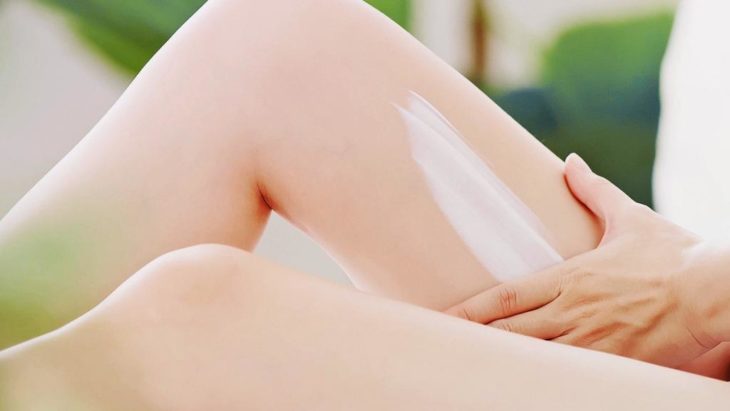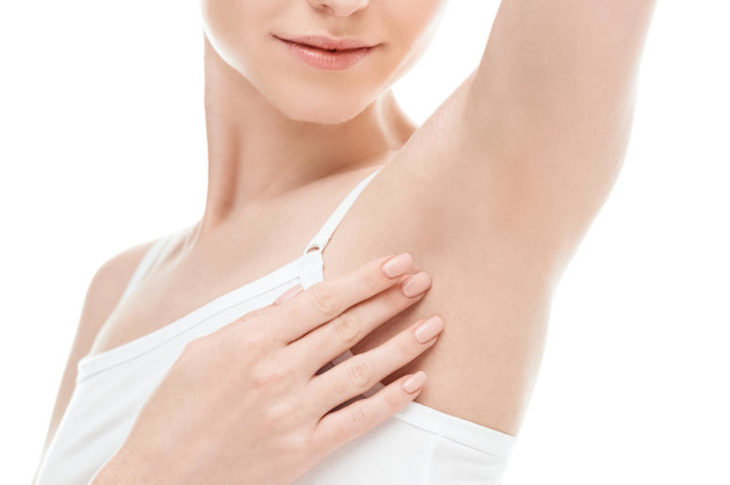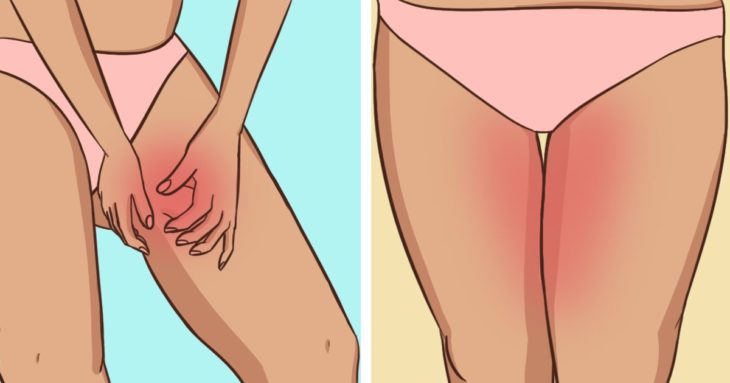Notice that burning, painful abrasion when your skin gets repetitively rubbed against your loose garment? Others call it friction burns but from a medical standpoint, it is called skin chafing.
Skin chafing is a common skin problem that can be acquired as a result of friction between skin to skin or skin to clothing. Though initially, the prolonged friction only results in mild, red rash, when these rashes get exposed to dirt and moisture like in sweat, the chafing consequently worsens creating a more burning and tingling sensation.
The market of today has made anti chafing creams and ointments widely available and accessible and more often than not, these are what people with chafed skin immediately turn to for help. However, the effectiveness of such products can become useless if the root of the problem is not addressed and prevented.
While chafing creams truly work, proper disinfection and other measures also have to be made too in order to achieve their most desirable effect. Treat your chafed skin at home the proper way. Heed these general steps:

Source: Parenting Healthy Babies
Contents
Step 1. Clean your chafed skin.
Many people, often out of laziness, discount the importance of wound cleaning and would immediately apply topical ointments on the damaged skin. Apparently, these kind of people are doing it totally wrong.
As a chafed skin, like any other abrasions, is usually exposed to a milieu of bacteria and these microbes can easily get in, cleaning and disinfecting it is imperative so that the skin can start healing. Missing this step can largely hinder a chafing product’s performance and can only worsen the problem once the chafed skin gets infected. This may lead to more skin inflammation which can take a longer time to heal.
Here’s the catch, though: avoid using any antibacterial soaps or ointments when you disinfect as antibacterial products are made to eradicate all sorts of bacteria, including the good ones which significantly participate in the natural skin repair. Such products contain chemicals too which may only irritate the wound. Instead, go for the organic way like the topical application of Manuka honey after washing your chafed skin with water. Its natural antibiotic properties help kill all sorts of bad bacteria.

Source: Healthline
Step 2. Help your chafed skin heal.
You can’t be more confident that your skin infections are eliminated than when you’re using natural products but let us admit it, more often than not, natural solutions like this do not suffice. And you’ll likely need a chafing cream to help commence its healing. Although a lot of sectors are against the use of medical ointments, the fact that they are FDA approved should put you at ease.
You will find many reliable chafing creams nowadays like that in Chafex which uses molecular structure to achieve what the skin does with cellular structure. Chafex is proven safe and does not have any sorts of irritants in the form of wax, silicone, petroleum or any preservatives. Hence, you can be confident that it will help your skin heal and protect the chafed area from getting further damaged.
It does not stop there however. Healing also means you must stay away from what triggers or causes the chafing.
The painful chafing is mainly caused by friction. Hence, you will often notice it on inner thighs, armpits, and other areas where skins meet. It can get relatively worse when the damaged skin deals with force or pressure or when soaked in sweat or when pressed against moisture.

Source: Healthy Food And Sport Tips
Step 3. Prevent chafing.
It is okay to seize the chafed skin-free moments but you should as well make sure it does not reoccur. Otherwise, you’ll need to go through the tedious and painful cycles of washing and applying ointments many times over.
These are what you should stay away from to prevent incidents of skin chafing:
- Wearing tight or loose clothes or those whose materials do not wick away moisture
- Wearing sweaty or wet clothes.
- Not wearing dry-fit active garments when working out
- Wearing inappropriate garments when swimming
- Wearing heels or shoes that are tight-fit
- Exposure to salt residue from sweat or sea water
- Humid areas as these can amplify sweating
Other factors that can increase the likelihood of skin chafing include:
- Breastfeeding
- Wearing napkins or diapers
- Wearing skirt because your thighs will surely rub as long as your lower body moves
- Careless participation in active sports like biking or running
If you had previously suffered from a series of skin chafing on the thigh, you can apply anti-chafing creams and wear anti-chafing shorts at the same time to prevent its reoccurrence. And don’t worry if you are a fashion lover; you can always wear bandelettes. Bandelettes are usually made of non-slip silicone fabrics and they are also cute to wear.
As obesity is also a popular factor that can increase the risk of chafing, to eat right as often as possible is a common recommendation. Otherwise, you’ll gain weight and that may mean more fat rolls – more skin friction. Maybe it is time you cut down on your sugar cravings. Do not get easily tempted by sugar-filled foods or processed foods as these will likely add up to your weight quicker. You should also watch out and stay away from food that can aggravate skin chafing like those with yeast as an ingredient.

Source: wikiHow
Use Anti Chafing Products
Anti-chafing creams are a commonly used product to combat and prevent chafing. As your options can likely become overwhelming, it pays to do a little research first before diving into a chafing product right away. Some are surely made less effective, others leave a messy feel even. Because of this, reading reviews and feedbacks is most likely necessary to make sure your skin investment is worth it.
There are also cheaper alternatives like lip balms and petroleum jellies but obviously, they are not made especially to counter skin chafing. If you plan to use these, make sure you have consulted your doctor first as these may contain ingredients and chemicals unsafe to the skin.
